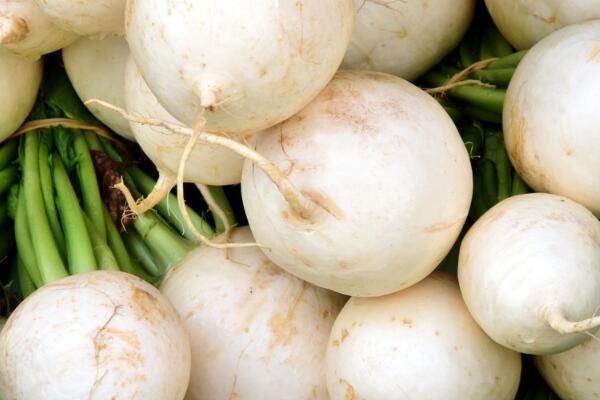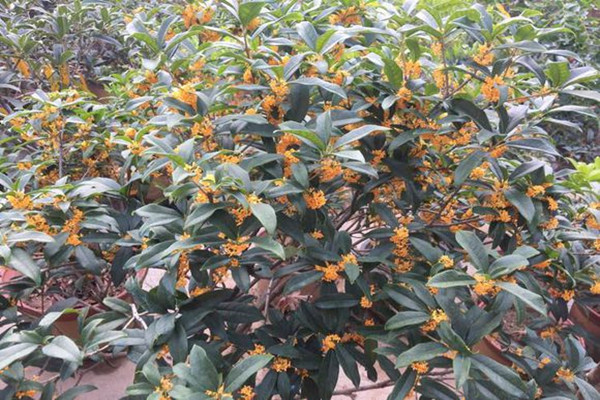How do herbaceous radish seeds sprout? How do you plant it? When will you plant it?
Radish cruciferous radish is a biennial or annual herb, which is mainly divided into Chinese radish and four seasons radish, which is cultivated all over the country. So how do its seeds sprout? How do you plant it? When will you plant it? It is understood that different types of radish have different sowing time. Autumn and winter radish type: common cultivation type in China. Late summer and early autumn sowing, late autumn and early winter harvest; winter and spring radish types: planted in areas south of the Yangtze River and Sichuan Province in winter, northern and western Guangdong and other winter sowing time is the most suitable in early November, central Guangdong in mid-November, the Pearl River Delta in November, coastal areas can be at the end of November, no later than late December; spring and summer radish types: widely cultivated in China. It has the advantages of cold tolerance, strong winterness, short growth period, generally 45-60 days, sowing from February to March and harvest from April to early June. In Huang-Huai-Hai region, it was sown from March to April and harvested from early May to June. In high latitude and high altitude areas such as northeast, northwest and northern North China, they were sown from April to May and harvested from June to July. The types of radish in summer and autumn are more cultivated in the south of the Yellow River Basin in China and are often used as vegetables in the off-season in summer and autumn. Sow from May to June and harvest from July to August.

How do radish seeds germinate?
Different from ordinary vegetable seeds, carrot seeds are attached to a layer of bristles on the surface, so it is better to soak the seeds with hydrogen peroxide solution.
1. Soaking time: put the prepared 25% hydrogen peroxide solution in a container, pour into the carrot seeds that have been rubbed off the bristles, stir with sticks while pouring, soak for 30 minutes and 50 minutes.
2. Seed germination: after soaking the seeds, remove the seeds from the hydrogen peroxide solution, then rinse with clean water for 3 times and filter the water at the same time, then put it in a container and cover it with a wet cloth to accelerate germination. If the seeds are moderately mature and full, more than 85% of the seeds germinate in 7-8 days, and the seedlings can be completed 5 days after sowing.
3, precautions: first, before soaking the seeds, we should choose sunny days to dry the seeds.
The second is to sterilize the seeds which have been soaked and germinated with chlorothalonil solution. Third, the seeds after seed soaking and accelerating germination and sterilization should be sowed in time and the soil should be moist. Fourth, cover 0.5-1cm thick soil after sowing and slightly suppress it, then cover the sun with mulch, and remove the mulch when 10%-15% of the seedlings are unearthed.
How to plant radish seeds?
1. Soil preparation and fertilization: select cultivation plots according to different varieties, generally large varieties of radish with deep soil, small and medium-sized varieties choose land with shallow soil layer, the field of radish should be ploughed and ploughed as early as possible, broken and raked flat, and the depth of cultivated land should be more than 26-40cm. In the way of making beds, deep ditches and high beds are adopted to facilitate drainage.
The base fertilizer containing Gymboree microbial fertilizer should be applied at the same time of soil preparation. Radish fertilization should be based on base fertilizer, supplemented by topdressing. The base fertilizer should be mainly organic fertilizer, with rotten barnyard manure 3000kg per mu, or rapeseed cake 150kg plus compound fertilizer 25kg crushed and mixed strips in the middle of the border.
2. Sowing: large varieties are sown on demand, medium varieties are sown with strips, and small varieties are sowed. The hole distance of on-demand sowing is square in 15~30cm, with 10 seeds per hole, 250g and 500g per mu, 500g / mu and 1000g / mu, respectively. After sowing, fully mix the rotten residue fertilizer with the vegetable garden soil at 1:1 and cover the seeds. If the soil is dry, it should be irrigated in time to facilitate seedling emergence. The seedlings were checked and replanted 4-5 days after sowing to ensure the whole seedling.
3. Interseedling (that is, pulling out inferior, hybrid and weak seedlings): the seedlings were divided into 2 to 3 times, in order to gradually expand the nutritional area of seedlings, and finally determine the seedlings according to the requirements of plant row spacing of different varieties.
4. Intermediate ploughing and weeding: ploughing should not be too deep in the seedling stage, loosen the soil as little as possible in the peak period of fleshy root growth, and strictly prevent bruising the root neck and true roots, causing bifurcated roots, split roots and rot. Autumn and winter radish, to timely ploughing and weeding, so that the soil is often kept soft, clean, grass-free, to prevent soil consolidation.
5. Irrigation: the temperature is high before and after the emergence of radish seedlings in autumn and winter, so it should be watered with small water frequently and once every evening. Irrigation was controlled before seedling setting to promote taproot growth.
Time: 2019-04-11 Click:
- Prev

When is the right time for grafting sweet-scented osmanthus trees? What are the grafting methods?
Sweet-scented osmanthus in August, sweet-scented osmanthus flowers are widely popular in our country, a small one, fresh and pleasant. It can be seen everywhere on both sides of the road, in parks or in people's homes, and grafting is the most common method of propagation of sweet-scented osmanthus trees. So do you know when the sweet-scented osmanthus tree is suitable for grafting? Are there any grafting methods?
- Next

When will the evergreen tree Luohan pine be grafted? What are the grafting methods?
Luohan pine alias Taxodium, Luohan pine family, is an evergreen coniferous tree, distributed in many provinces of China, cultivated in the garden as an ornamental tree. So do you know when Luo Han Song will be grafted? Are there any grafting methods? According to the data, Luohansong is usually about ten days before the beginning of spring, and it can be grafted at the end of February or early March.
Related
- Fuxing push coffee new agricultural production and marketing class: lack of small-scale processing plants
- Jujube rice field leisure farm deep ploughing Yilan for five years to create a space for organic food and play
- Nongyu Farm-A trial of organic papaya for brave women with advanced technology
- Four points for attention in the prevention and control of diseases and insect pests of edible fungi
- How to add nutrient solution to Edible Fungi
- Is there any good way to control edible fungus mites?
- Open Inoculation Technology of Edible Fungi
- Is there any clever way to use fertilizer for edible fungus in winter?
- What agents are used to kill the pathogens of edible fungi in the mushroom shed?
- Rapid drying of Edible Fungi

